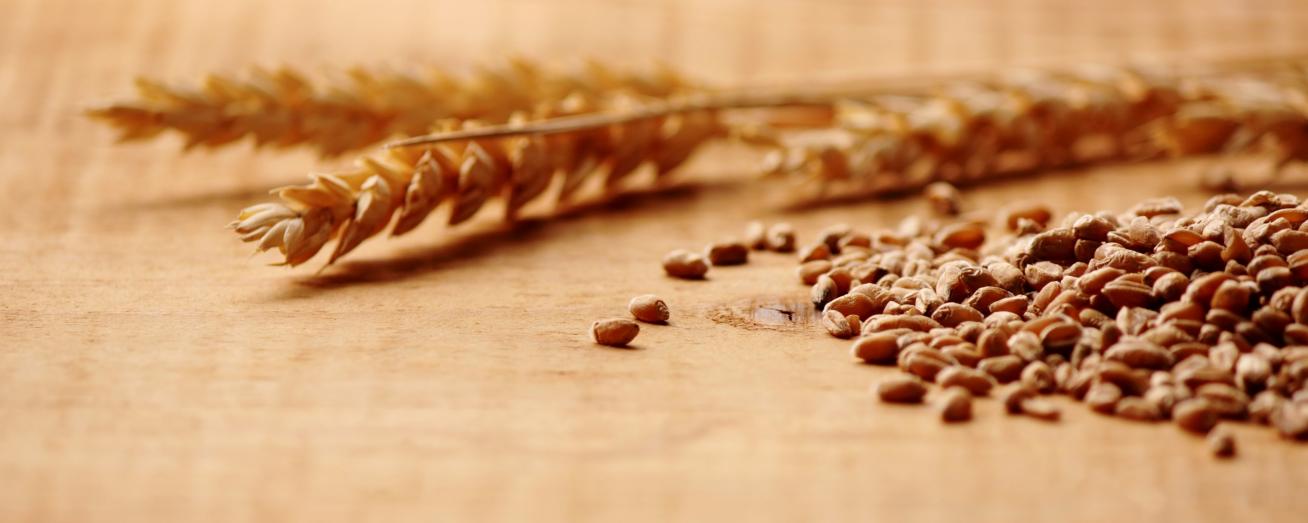Classically speaking, a wheat allergy should only require the avoidance of wheat and wheat containing products. There are however two very important points that should be taken into account:
Labelling
Those avoiding wheat should be able to read food labels and understand labelling laws, which varies across the globe. In the EU the food labelling law [6] for pre-packed foods requires that all pre-packed food, including alcoholic drinks, sold in the UK or the rest of the EU clearly list all ingredients, including any of the major allergens, including wheat, even if only present in small amounts.
In terms of wheat, according to the EU legislation the following has to be clearly identified on the label:
Cereals containing gluten namely wheat (such as spelt and Khorasan wheat), rye, barley, oats and their hybridised strains and products thereof, except:
- wheat based glucose syrups including dextrose
- wheat based maltodextrins
- glucose syrups based on barley
- cereals used for making alcoholic distillates including ethyl alcohol of agricultural origin
However, the EU directive does not abolish the use of precautionary allergen statements such as ‘may contain’ statements on labels to indicate the unintentional presence of an allergen. Thus, even though an allergen (such as wheat) is not deliberately included in the food, the manufacturer cannot guarantee that allergen is absent due to risk of cross contamination from the manufacturing process or from it being handled on site. The Food Standards Agency advises that precautionary allergen statements should only be used following a thorough risk assessment and if it is considered that there is a real risk to the consumer.
At the end of 2014 (18), new legislation from the EU came into force, which requires food businesses to provide allergy information on food sold, unpackaged, in for example restaurants, catering businesses, deli’s, bakeries and sandwich bars. The Food Standards Agency has produced guidance to help businesses with this (19).
IgE mediated wheat allergy
There are two very important points that should be taken into account:
- Wheat cross-react with grass pollen, rye and barley and the clincal relevance of that is poorly understood. Studies looking into the cross-reactivity between wheat, rye and barley, found a clinical cross-reactivity of around 25% - 55%. Therefore, even though though these clinical cross-reactions do not always exists, it clearly is a problem for some (16,17). Therefore in some cases of wheat allergy, patients may be advised to avoid rye and barley as well, but that will not always be the case.
- Wheat can be cross-contaminated with other grains during manufacturing but the clincal relevance of this for both IgE and non-IgE mediated wheat allergy (apart from coeliac disease) is not clear. Avoiding foods that state “may contain traces of wheat” is another highly debated point in food allergy. Having to avoid all products containing warnings of “may contain” does have a financial impact and may affect quality of life.
Some clinicians may, however opt to advise on this approach, but will be based on factors such as:
- Severity of past reactions
- Amount of wheat reacted to in the past
- Co-existing asthma
- And perhaps severity of other food allergy
Non-IgE/mixed IgE and non-IgE mediated wheat allergy
Level or degree of wheat avoidance required for non-IgE mediated diseases (FPIES and EoE) or those showing a mixed pattern of mechanisms (eczema) are even less clear and an individual approach based on each case is usually recommended [3-5].
Dining Out on a Wheat Free Diet
When dining out there may be a greater chance of accidentally consuming wheat because despite the increased information on actual ingredients in restaurant foods, the risk for cross-contamination still exists.

A referral to a dietitian is crucial to ensure that the diet remains balanced and healthy while avoiding wheat in appropriate levels.
Foods to avoid, foods that may contain wheat and suitable foods
| FOODS TO AVOID | FOODS THAT MAY CONTAIN WHEAT | SUITABLE FOODS |
|---|---|---|
| Cake | Modified Starch | Rice or corn pasta |
| Biscuits, Cookies | Soy sauce | Amaranth |
| Pies, pastry, batter | Surimi (imitation crab) | Arrowroot |
| Breads | Ready-made foods such as gravy, soups | Barley |
| Pasta | Processed meats, fish, ready meals | Black, white, fava, and garbanzo beans |
| Crackers | Soup mix e.g. split peas/lentil mixes broth, tinned, instant or fresh soups | Buckwheat |
| Cereals and cereal bars | Bottled sauces | Corn/Maize |
| Bulgar | Stock cubes, gravy mixes, sauces | Millet |
| Couscous | Soy sauce, mayonnaise and mustard | Oats (gluten-free) |
| Cracker meal | Foods containing herbs, spices, artificial flavouring & thickener | Rice |
| Enriched wheat flour | Beer & lager | Rye |
| Farina | Gluten free foods containing codex wheat starch | Tapioca |
| Faro | Potato (white or sweet) | |
| Cereal filler | Cassava | |
| Hydrolysed wheat protein | Yam | |
| Durum wheat | Quinoa | |
| Kamut/wheat grass | Gram/Chick pea | |
| Matzoh | Sago | |
| Semolina | ||
| Spelt | ||
| Wheat bran/germ/gluten/malt/starch | ||
| Triticale | ||
| Whole wheat berries |
Reference
- Jones SM, Magnolfi CF, Cooke SK, Sampson HA. Immunologic cross-reactivity among cereal grains and grasses in children with food hypersensitivity. J Allergy Clin Immunol 1995; 96:341-51.
- Pourpak Z, Mesdaghi M, Mansouri M, Kazemnejad A, Toosi SB, Farhoudi A. Which cereal is a suitable substitute for wheat in children with wheat allergy? Pediatr Allergy Immunol 2005; 16:262-6.
- Nam YH, Hwang EK, Jin HJ, Lee JM, Shin YS, Ye YM, Palacin A, Salcedo G, Lee SY, Park HS. Comparison of specific IgE antibodies to wheat component allergens in two phenotypes of wheat allergy. J Korean Med Sci. 2013 Nov;28(11):1697-9.
- Constantin C1, Quirce S, Poorafshar M, Touraev A, Niggemann B, Mari A, Ebner C, Akerström H, Heberle-Bors E, Nystrand M, Valenta R. Micro-arrayed wheat seed and grass pollen allergens for component-resolved diagnosis. Allergy. 2009 Jul;64(7):1030-7.
- National Institute for Health and Care Excellence. Diagnosis and assessment of food allergy in children and young people in primary care and community settings. Clinical Guideline CG116. London: 2011
- http://eur-lex.europa.eu/legal-content/EN/ALL/?uri=CELEX:32011R1169
